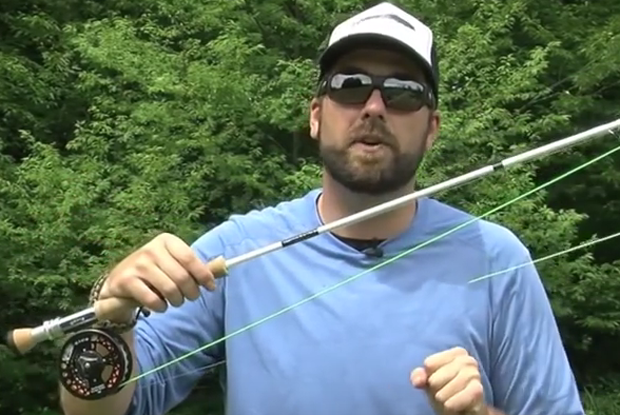Rod rigging, no matter your adeptness, is a tedious and time-consuming process. Here’s how to avoid doing it more than once on each outing or leaving it in your vehicle ready to fish
[dropcap]B[/dropcap]efore his career with Orvis, Truel Myers was my weekly tennis opponent and fishing buddy when I lived in Jacksonville, Florida. Truel, now the former head instructor at the Orvis Fly-Fishing Schools. He taught me one way to rig rods for travel between one fishing hole to the next at full throttle in his skiff.
The other rigging method was taught to me by Steve Kantner, South Florida’s Land Captain. Steve was a decade-long neighbor and fly fishing companion. Steve’s method more suited for walk-in fishing (see his book) or traveling from venue to venue via truck or vehicle.

In addition to the referenced ‘rod caddy’ shown there is one that suspends from the roof interior of an SUV. Mike Houska image for Orvis.
Fly rod car caddy
Yes, there is a third way, a fly rod caddy. It is a gadget that mounts on a vehicle via suction cups affixed to the vehicle’s hood and windshield. It’s rated for highway use, but no thanks, just secondary and backcountry roads for me thanks (see image).
1. Truel Myers’ way of transporting a rigged fly rod
Truel’s way is the easiest to un-rig for the purpose of transport. Take line in so that you have about two rod lengths of fly line and leader with fly exposed. Hook the fly on the last snake guide, the one before the stripping guide. Never on a stripping guide – think guide surface damage. Wrap the remaining line around the ‘back’ portion of the reel (go from over reel to behind reel)) and tighten down the fly line so there is no remaining slack.
To start fishing, pull line off some fly line to release tension. Hold the rod in your dominant hand, tap the rod above the handle and the fly will pop off and Voila, ready to fish.
You can use Truel’s method while hiking in the woods. We do not recommend pointing the fly rod straight ahead of you while hiking. Just the weight imparted by you on a tip top by completing a forward step could snap a hung up, delicate rod tip. A better way is to hold rod so it is pointing directly behind you. If it hangs up you have the advantage of your hand and arm providing a natural cushion – protecting a hung up guide or tip top from damage.
2. Steve Kantner’s way of transporting a rigged fly rod. A reel cover an enormous benefit
Steve’s way of un-rigging for the purpose of transport a bit more complicated. Hook the fly on the last guide of the second section of the top two sections of the fly rod (4-piece rod). Break the rod in half and fold the top two sections so that the tip top is upside down and nested against the butt of the rod. Now, reel up the slack. Take the leader (just the leader or tip) and wrap it around ‘both’ sections of the fly rod (trapping it with a guide), as many times as possible to tension lock in place both halves. Put on the reel cover on so that the tip top section is locked in place.
To start fishing remove reel cover, flip upside down tip top section to orient with normal direction, release fly, reattach sections and Voila, ready to fish.
NOTE: These methods of protecting your rod/s during transport are not insurance against damage from impact. Only a hard covered rod case and a sober baggage handler can do that.
Featured Image: Orvis video Rigging our Rod to Move to a New Fishing Spot.
• You can access a video to see how Truel’s rod protection system works by clicking here . . .
• You can access a video to see how Steve’s rod protection system works by clicking here . . .


